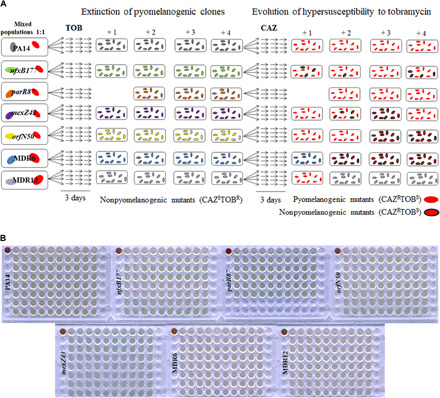Fig. 3. Analysis of TOB/CAZ sequential evolution of heterogeneous pyomelanogenic populations of P. aeruginosa.

(A) Diagram showing the evolution of heterogeneous populations (dubbed +1, +2, +3, and +4) containing each parental strain: PA14, nfxB177, parR87, mexZ43, orfN50, MDR6, or MDR12 and four individual pyomelanogenic clones belonging to the same genetic background, during first step of sequential evolution in the presence of TOB (left) and second step in the presence of CAZ (right), for 6 days (see Materials and Methods). In the case of parR87, only three pyomelanogenic clones from independent CAZ-evolved populations (see Fig. 1, A and C) could be isolated. Hypersusceptibility to TOB (contoured and noncontoured red-colored cells) is observed in 23 of 27 populations (see table S4), and pyomelanin production (noncontoured red-colored cells) is observed in 17 of 27 populations. (B) Analysis of extinction of the pyomelanogenic part of the heterogeneous pyomelanogenic populations after a first step of sequential evolution in the presence of TOB [(A) section, left]. The phenotype (color) of 20 clones isolated from each heterogeneous population, after 3 days of TOB evolution, was observed in liquid medium and compared with the color (brown) of each pyomelanogenic parental strain (upper left corner of each plate). In agreement with data shown in table S4, which points to the extinction of pyomelanogenic populations by comparison of CAZ MIC value of each heterogeneous population with the ones of their parental strains and pyomelanogenic clones, the color of the 540 clones analyzed indicated that pyomelanogenic clones were extinct after first step of sequential evolution on TOB. Photo credits for (B): Fernando Sanz-García, Centro Nacional de Biotecnología.
